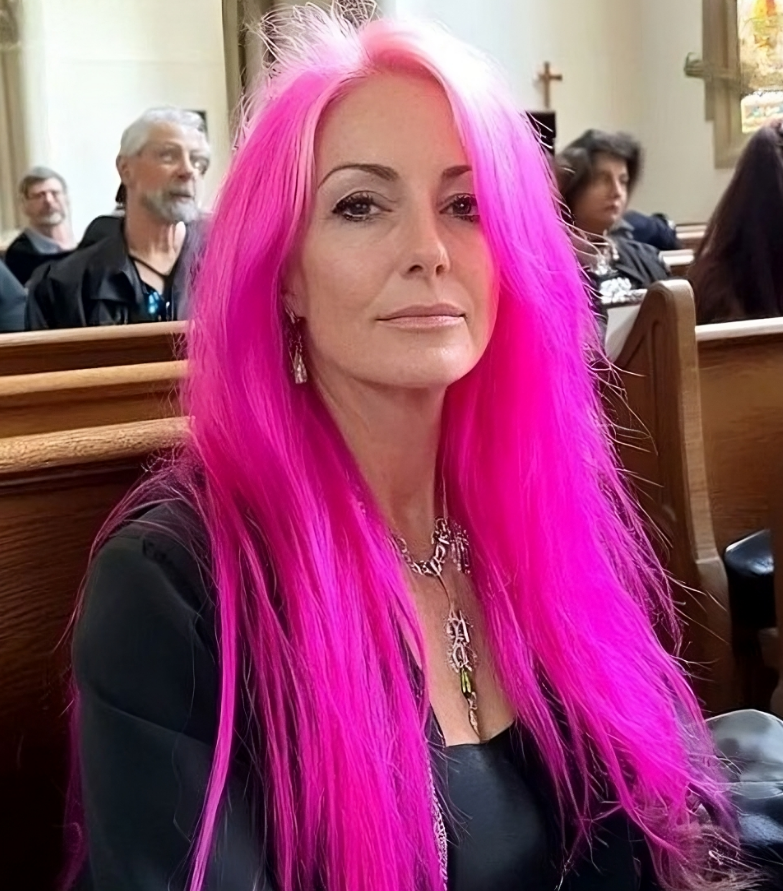Stepping into church last Sunday, I was prepared for a peaceful, reflective morning. But as I settled into my seat, something jolted me out of the usual quiet reverie. There, a few rows ahead, sat a woman with vibrant, neon-pink hair—a shade so intense that it seemed almost to glow. I found myself distracted, unable to concentrate on the sermon, as I mulled over whether this bold style choice was appropriate in such a sacred setting. I couldn’t help but ask myself: is bright pink hair disrespectful in church, or is it simply a form of self-expression?
The Church as a Space for Tradition and Respect

Growing up, I was always taught that church was a place to dress modestly and with respect. We’d put on our “Sunday best,” which, for my family, meant muted colors, understated patterns, and simple styles. In a world that’s constantly shifting and evolving, church was a sanctuary—a place that remained steady, even as fashion trends and cultural norms changed outside its walls. For many of us, dressing conservatively in church is an outward expression of reverence, a way to show respect for the divine.
However, today’s world is markedly different. Self-expression through bold fashion choices, hairstyles, and colors has become not only accepted but celebrated. So where does that leave the church? Should it adapt to these changes, or does its sacredness demand a different standard?
Navigating the Line Between Self-Expression and Respect
As I watched the woman with pink hair, I found myself grappling with my own assumptions. Part of me felt that her look clashed with the calm, reflective atmosphere of the church. But another part wondered: who am I to judge how someone chooses to present themselves? The purpose of attending church, after all, is to worship and connect with one’s faith. Shouldn’t that take precedence over how one looks?
It’s easy to interpret certain choices as “attention-seeking,” especially in a setting that many of us view as solemn. But perhaps she didn’t intend to draw attention; maybe, for her, pink hair is just another part of her identity, as natural as wearing a favorite sweater or a cherished pair of shoes.
Respecting Sacred Spaces: Outdated Tradition or Essential Practice?
There’s a certain comfort in traditions, particularly when it comes to spaces like churches. For centuries, churches have been places where people go to reflect, seek solace, and find guidance. Dressing modestly is a tradition that aligns with these purposes, reinforcing the church as a unique space set apart from the everyday hustle and bustle. To me, and perhaps to others who grew up with similar values, a place of worship isn’t just another building; it’s a symbol of something larger, a space that invites reverence.
But traditions can evolve, and today’s world places a high value on individuality. Does embracing self-expression diminish the sacredness of church, or does it simply reflect a shift in how we define respect? Is there a balance we can strike between maintaining a level of decorum and allowing people to feel authentic and comfortable in their skin, even within sacred walls?
The Exchange That Made Me Question My Perspective

After the service, I decided to speak with the woman. Approaching her, I said politely, “Excuse me, I couldn’t help but notice your hair. I just wanted to share my thoughts—it’s a bold choice for church, don’t you think?”
Her response caught me off guard. “I come to church to pray, not to be judged on my appearance,” she replied with a friendly but firm smile. In that moment, I realized that, perhaps, my concerns were rooted in my own assumptions. While I viewed my comments as expressing a certain viewpoint about church decorum, she saw them as judgmental.
Reflecting on our exchange, I found myself questioning whether it was fair of me to impose my expectations on someone else. After all, church is a place where we should feel welcomed, a space where we gather as a community to grow spiritually, no matter what we look like. This encounter made me wonder if I was clinging too tightly to conventions that may not be as universally meaningful as I once thought.
Does Appearance Really Matter in Worship?

As the world becomes increasingly diverse in how people express themselves, it may be time to reevaluate what truly matters in a place of worship. Should our focus remain on appearances, or should we prioritize inclusivity and acceptance? Perhaps, in a church setting, we can hold space for both tradition and individuality. After all, what truly defines the essence of worship is the intent behind it, not the external trappings.
There’s something to be said for respecting the traditions that make church a special place. But there’s also value in welcoming everyone, just as they are, without judgment. Maybe the bright pink hair isn’t disrespectful; maybe it’s just different from what we’re used to. And maybe, as a community, we can grow to embrace those differences, allowing the church to be a place where anyone can feel like they belong.
The Larger Conversation: Can We Bridge Tradition and Modernity in Worship?

This experience opened my eyes to the possibility that church, like any other institution, is capable of evolving. Just as society has changed, perhaps our understanding of what’s appropriate in church can also adapt. Respect for sacred spaces doesn’t necessarily have to mean dressing a certain way—it could mean showing up with an open heart, ready to connect with others, regardless of how we choose to present ourselves outwardly.
For those of us who find comfort in the traditional ways, this may not come easily. But maybe the church can be a place where different expressions of respect coexist. After all, the church’s message is about love, understanding, and acceptance. If we embrace that message, perhaps we can find a way to welcome both the neon-haired and the conservatively dressed alike.
In Conclusion: Finding Common Ground in a World of Differences

In reflecting on the woman’s vibrant pink hair, I’ve realized that respect for church—and for each other—can take many forms. We all bring our unique identities into sacred spaces, and perhaps it’s this diversity that enriches our shared experience. Whether we come dressed in our Sunday best or with hair that shines in all the colors of the rainbow, what matters most is the sincerity with which we enter that space.
In the end, perhaps the church can serve as a reminder that beauty lies not only in tradition but in the variety of ways people express their faith. After all, it’s our collective presence, not our individual appearances, that makes church the welcoming, sacred space it has always been.